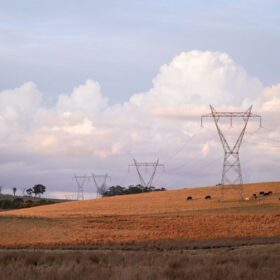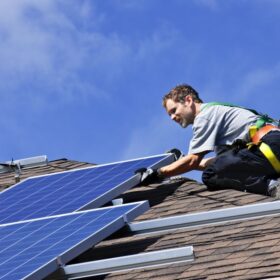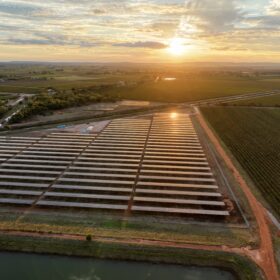The investment will enable government to guarantee affordable, green, stable power for locals. It will also provide certainty around land, as well as the demand needed to facilitate private sector-led delivery of remote power system services.
A key part of this investment is developing an open and contestable delivery framework to facilitate around $400 million of private investment in remote power system services to communities supplied by Indigenous Essential Services.
The framework aligns with the recommendations of the Territory Economic Reconstruction to transition remote power systems for 72 remote communities’ services by the Indigenous Essential Services program to renewable-based systems by 2030.
This transition will require the integration of innovative renewable energy technologies, such as renewable hydrogen, and builds on existing Government renewable energy investments and programs, including:
· The success of the $59 million Solar Energy Transformation Program (SETuP), co-funded by the Northern Territory Government and the Australian Renewable Energy Agency (ARENA), that delivered 10 megawatts of solar generation to remote communities in the Territory between 2017-2019.
· $6.6 million in the Renewable Remote Power Program, beginning with a pilot program to supplement the power supply at Wurrumiyanga with renewables replacing diesel.
· $8.3 million Alice Springs Battery Energy Storage System (BESS) and procurement for the $30 million Darwin to Katherine BESS that is underway.
· $5 million Rooftop Solar in Schools program, tied to solar technology educational programs and the savings in energy costs are reinvested back into schools; and
· The successful Home and Business Battery Scheme.
The Territory Labor Government is proposing to undertake a two-stage competitive process to secure the delivery of renewable energy, following project assessments and community engagement.
The competitive process will focus on maximising opportunities for local industries, creating jobs for Territorians and building local skills and expertise.
The Territory has been working with Infrastructure Australia which recently recognised the remote community power generation program as a priority initiative in the updated 2021 Infrastructure Priority List – a guide to nationally significant infrastructure needs.
In addition to delivering clean and reliable energy, investments in remote power system services can lead to cost savings and deliver substantial reductions in emissions, as diesel is displaced.
The Territory Labor Government is working towards delivering a target of 50% renewables by 2030, and this includes all Aboriginal communities supplied by Indigenous Essential Services and major regional centres. This initiative is targeting an aggregate 70 per cent renewables penetration in communities.
The Government recognises the important role energy and renewables play as a key driver for the Territory’s economic comeback.
“Energy and renewables will unlock private investment and create local jobs – and we are hunting every opportunity,” Chief Minister Michael Gunner said.
“Renewables are a big part of how we lock in the comeback from the coronavirus crisis and this opportunity will open the door to millions more dollars to flow into the Territory.
“Infrastructure Australia recognises remote power generation as a national priority.
“Attracting private sector investment at this scale will establish the Territory as a leader in remote micro-grids technologies.
“We will keep doing the hard work to provide jobs for Territorians, right across the Territory – everyone has to be part of the comeback.”
Minister for Renewables and Energy, Eva Lawler said: “No matter whether you live in the city, or in the bush, Territorians deserve access to reliable and affordable power.
“This transition will improve energy systems in the bush, contribute to our renewables target and provide plenty of jobs for Territorians along the way.
“This government is working towards reaching our target of 50% renewables by 2030.”






By submitting this form you agree to pv magazine using your data for the purposes of publishing your comment.
Your personal data will only be disclosed or otherwise transmitted to third parties for the purposes of spam filtering or if this is necessary for technical maintenance of the website. Any other transfer to third parties will not take place unless this is justified on the basis of applicable data protection regulations or if pv magazine is legally obliged to do so.
You may revoke this consent at any time with effect for the future, in which case your personal data will be deleted immediately. Otherwise, your data will be deleted if pv magazine has processed your request or the purpose of data storage is fulfilled.
Further information on data privacy can be found in our Data Protection Policy.